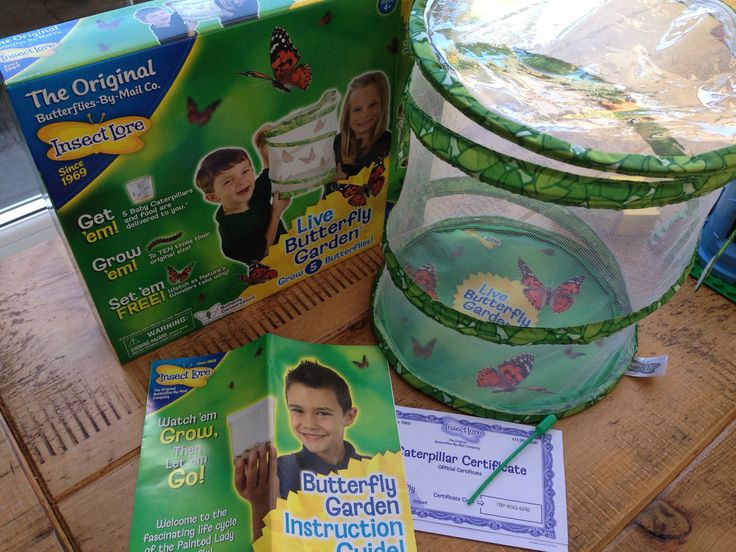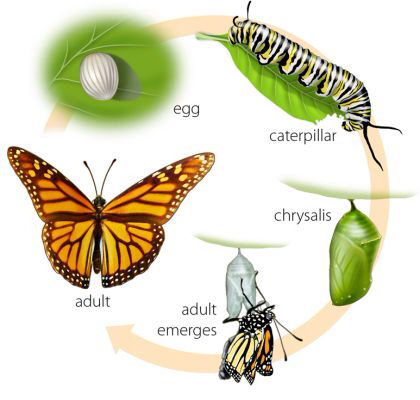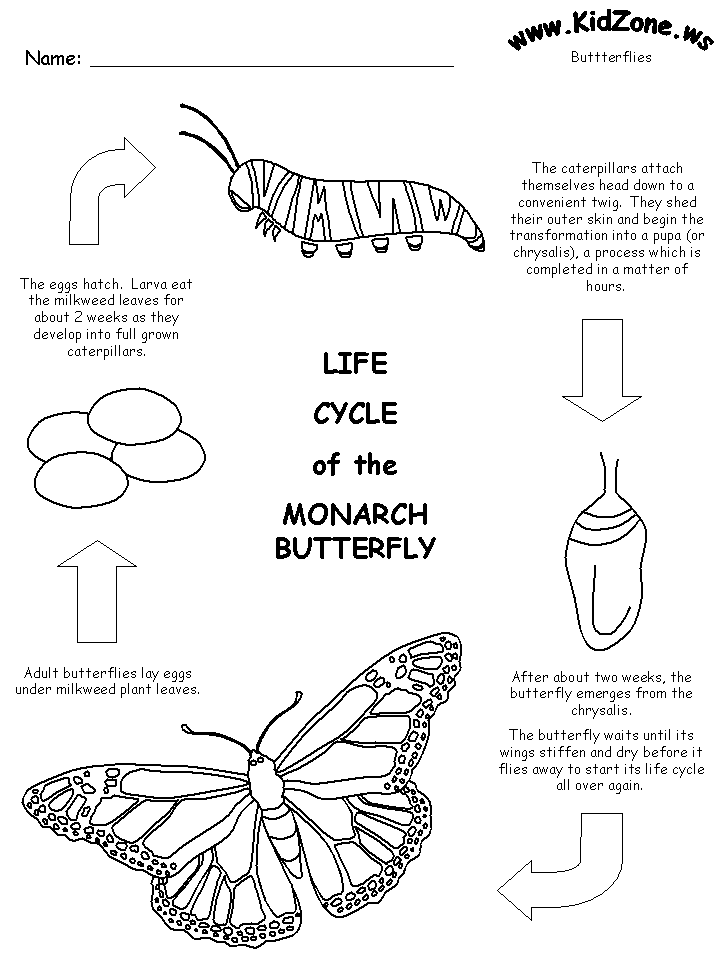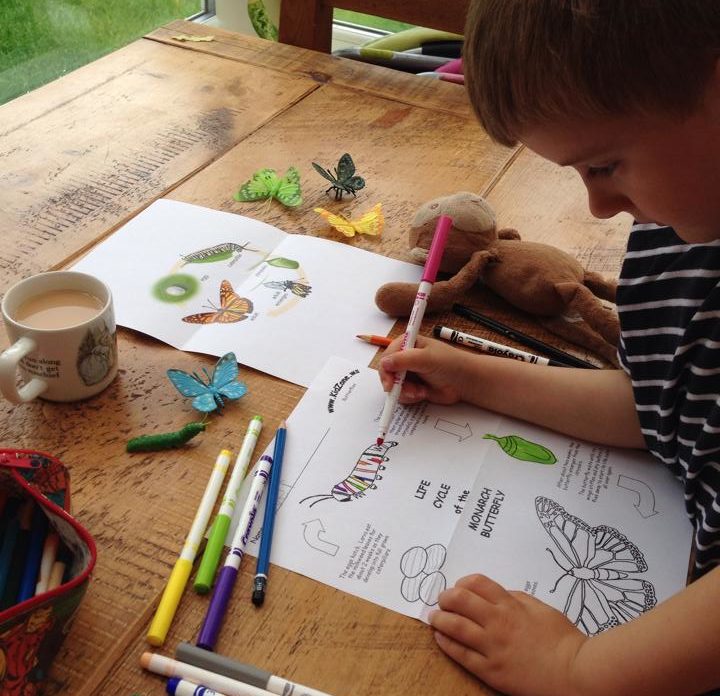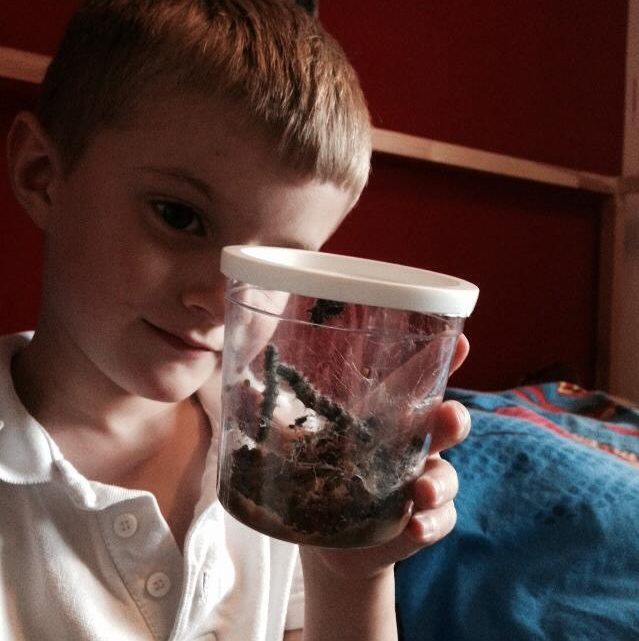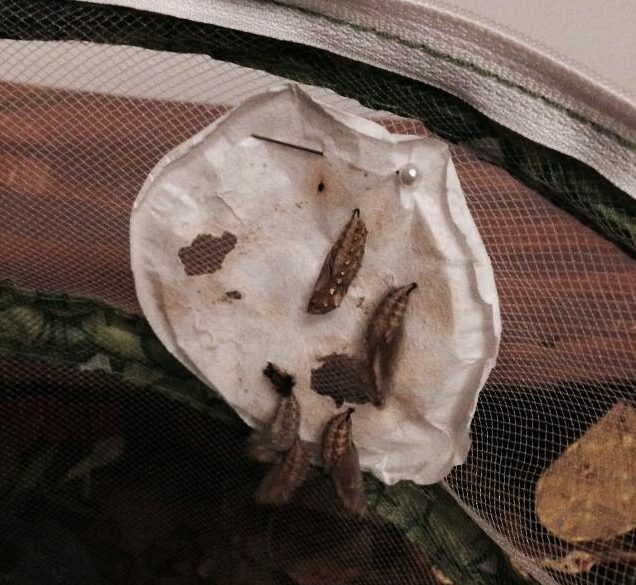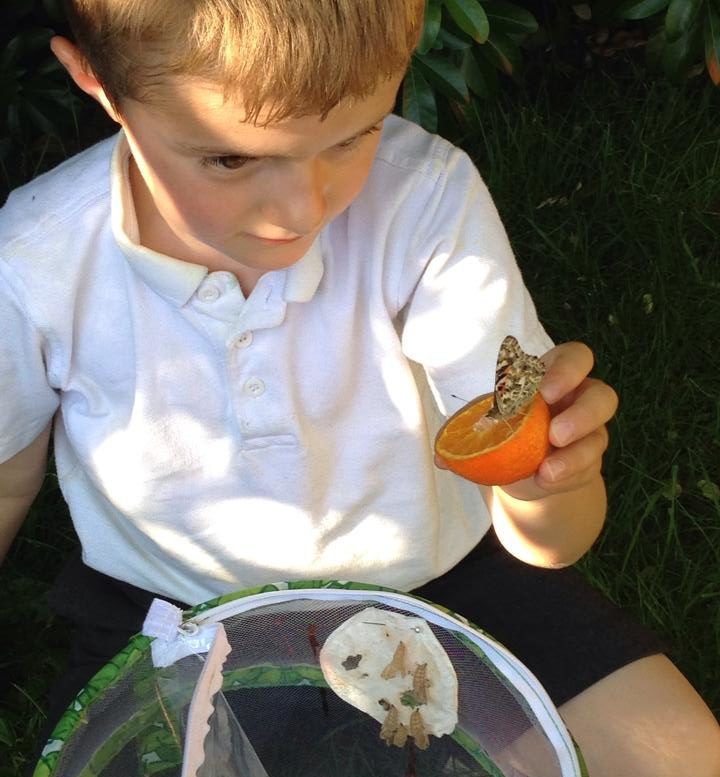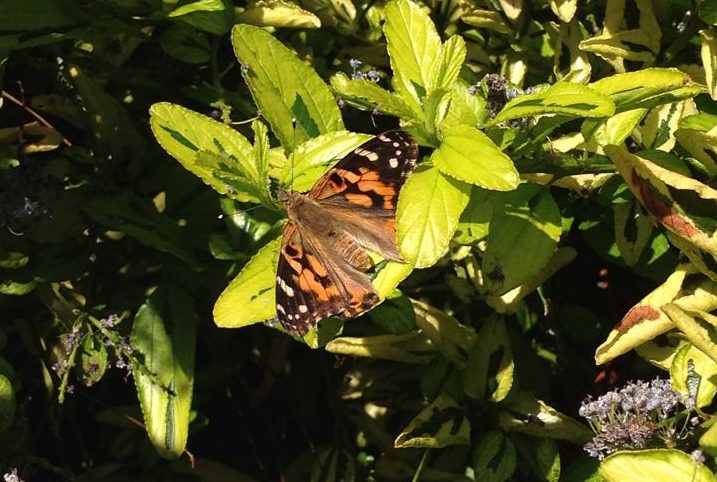Learn about life-cycles up close and watch butterflies hatching with your own live butterfly garden.
This, of course sparked great interest about how caterpillars turn into butterflies and prompted questions such as: What do they eat? How long will it take for them to grow? What will we call them?!
Getting started
We started by ordering the caterpillars, as these come separately from the special caterpillar people! Whilst we waited for them to arrive, our first activity was to learn about the lifecycle of a butterfly.
We googled ‘butterfly life-cycle’ and founds lots of information about how they start as eggs, hatch into caterpillars, turn into chrysalises and finally emerge as beautiful butterflies. We talked about how the butterflies flutter around meadows and gardens, collecting nectar from flowers, laying new eggs on leaves, which then start the life-cycle all over again. The children found this fascinating, so we printed out some free resource sheets from kidzone to use.
Exploring habitats
We also looked at a set of mini-beasts. In the pack there were some caterpillars and butterflies, which were great for the children to hold and play with. The children created their own habitat for the mini-beasts using an old paint tray (you could also use a Tuff Spot), artificial grass and flowers, moss, pebbles, blue paper and water beads (great for sensory play) for water and finally added the mini-beasts into the scene.
Caterpillars
The baby caterpillars arrived after a couple of days. The children were immediately intrigued and sat and watched them crawl about. They didn’t move very much for the first few days but after a while they started to grow quite quickly and were very active. The children used magnifying glasses and could see how hairy they were and even make out their faces!
We read the classic story ‘The Very Hungry Caterpillar’ by Eric Carle. Our version contains a lovely pop-up of the vividly coloured butterfly on the last page.

Two other lovely activities to tie in with this project could be to make a paper plate butterfly or a pom-pom caterpillar.
A visit to a butterfly house
Another great idea to link with this project is to visit a butterfly house. We had a trip to the butterfly house at Twycross Zoo. The staff there explained all about the many types of colourful butterflies we could see; they had many chrysalises hanging, and we even saw some hatching!
The next stage
After about 7 days our caterpillars turned into chrysalises! Initially the caterpillars climbed to the top of the pot and hung down from the lid. Literally, within a few hours, we returned to find they had chrysalised – the children were amazed….caterpillars one minute, chrysalises the next!!
We had to take the cotton pad they were stuck to from the inside of the lid, and pin it to the inside of the mesh house that came in the pack. The house is great because it can be flat packed and pops up when you need it, making it re-usable and easily stored for next time. (You can also use it for stick insects!)
We kept an eye on the chrysalises for about 4 days. One morning we came in to find that all but one had hatched! We quickly found them some fruit and dropped some water onto it for them to drink. We also added a branch with leaves on. The children watched in amazement at the butterflies fluttering around with their lovely bright orange and black wings. We watched them land on the oranges and the melon and suck the fruit through their long tongues!
The final stage
After a couple of days we set them free. The children didn’t want to let them go so I explained that they needed to fly free outside where they belong, for lots of other boys and girls to see and more importantly because they needed to visit flowers to drink nectar and pollinate other flowers – which is a topic in itself! I also reminded them how the butterflies needed to lay new eggs, which would mean that the life-cycle would start again and asked questions to find out what they had learned! What do the eggs hatch into? What happened next? What colours did you see? What do the butterflies drink?
In conclusion
We loved having the caterpillars and setting them free – it was great to see the children’s faces as they flew out of the habitat! They even got to hold one up close, on half an orange and a leaf.
We have learnt about life-cycles and the food butterflies eat. It has taught the children how to look after them and to treat them carefully as they are only tiny!
This would make a lovely classroom project! My children have animatedly told other classes and friends about our butterflies. This has encouraged other classes at their school to do the same and also for some children to want to do it at home.
If you have any photos from a similar project please share them with us. Our next project is to make our own bug hotel – watch this space!


